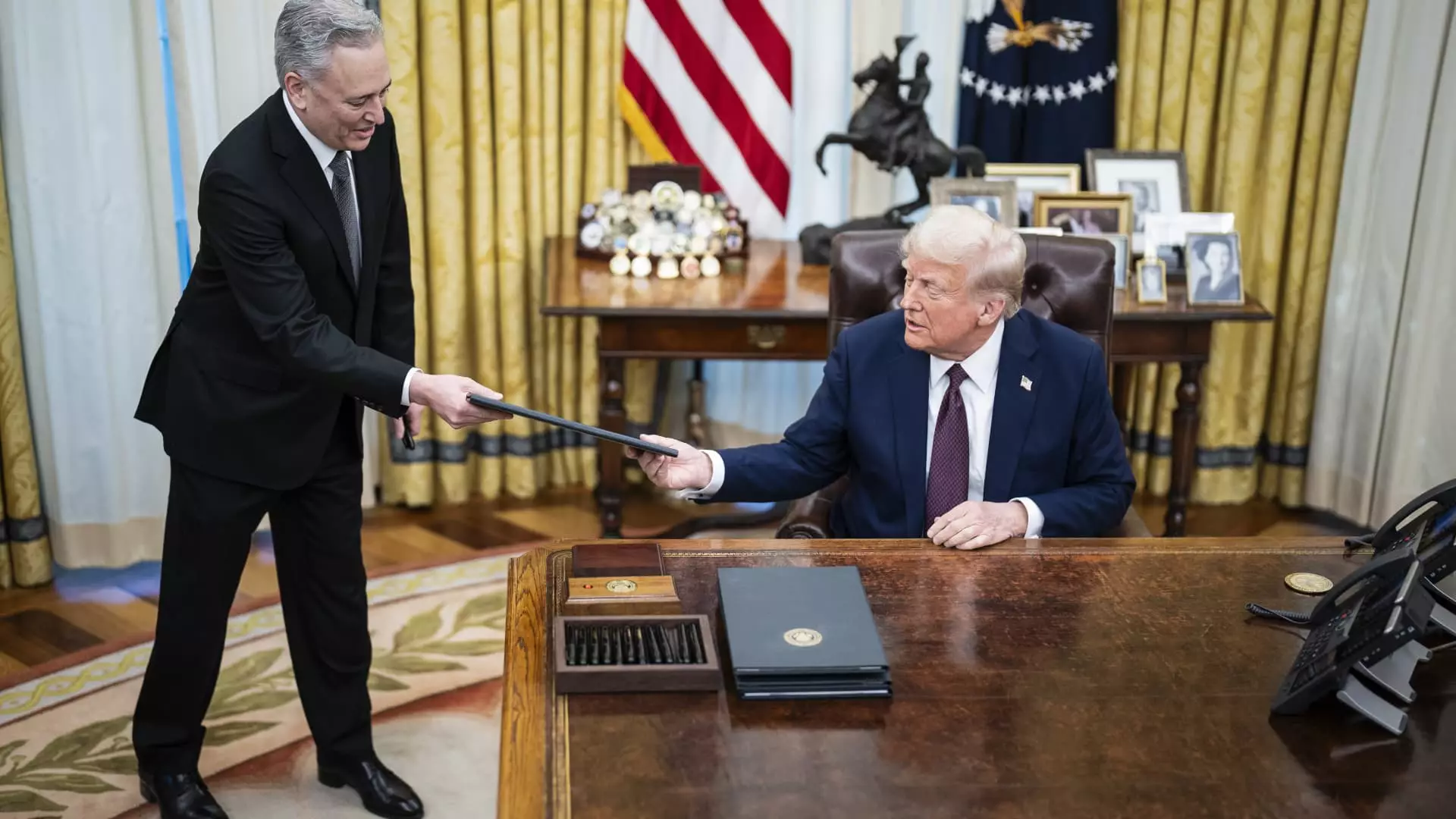In a groundbreaking move that signals a major transformation in the American approach to digital currency, President Donald Trump’s recent executive order establishing a Strategic Bitcoin Reserve may well alter the landscape of cryptocurrencies in the United States and beyond. By tapping into the assets seized from criminal and civil cases, the initiative aims to create a reserve that disassociates taxpayer funds from the growing digital economy—a concept that not only preserves financial integrity but also emphasizes the government’s growing acceptance of Bitcoin as a legitimate asset.
The ramifications of this order extend beyond mere financial stewardship; they mark a seismic shift in how digital assets are perceived at the policy level. For far too long, Bitcoin has battled stigma and skepticism, often categorized as a fringe or speculative investment. However, with the federal government asserting a formal mechanism for Bitcoin’s management, we could be observing the dawn of its recognition as a staple of financial reserves akin to gold.
What Does the Reserve Entail?
The reserve, according to the White House’s Crypto and AI Czar David Sacks, will be distinctly funded through Bitcoin obtained via forfeiture—allowing the U.S. government to harness remarkable value without imposing any additional burdens on American taxpayers. This strategy is particularly astute as it underscores a deliberate effort to utilize existing government holdings, estimated at around 200,000 Bitcoin, while ensuring no new taxpayer dollars are linked to its operational cost.
Mandating an audit of federal digital asset holdings, the executive order compels transparency—something sorely lacking in previous regulatory efforts. Moreover, by prohibiting the sale of Bitcoin from the reserve, the action positions this digital currency as a permanent store of value. Critically, it highlights Bitcoin’s potential as a hedge against inflation and economic uncertainty, a testament to its growing utility as an asset class.
The Inclusion of Various Cryptos: A Double-Edged Sword
Despite the optimism surrounding the strategic reserve, Trump’s statements regarding the inclusion of other cryptocurrencies have sparked controversy within the crypto community. Bitcoin proponents like Tyler Winklevoss voice a compelling argument: Bitcoin alone exemplifies the necessary criteria to occupy a strategic reserve, largely due to its established network security and prominence. The fear is that extending the reserve’s scope to include assets such as Ethereum, XRP, or Cardano could dilute Bitcoin’s status as the premier digital asset, thereby leading to confusion over what constitutes legitimate value in the burgeoning crypto space.
From a financial standpoint, including these assets could appear less like a calculated investment strategy and more like a speculative venture, raising questions about the reserve’s integrity. Skepticism surrounding this breadth of inclusion reflects wider concerns about categorizing digital currencies—further complicating the narrative surrounding Bitcoin as a cornerstone of a new financial paradigm.
Market Reactions and Industry Outlook
The executive order elicited immediate market responses, with Bitcoin and other cryptocurrencies seeing fluctuations that starkly reflected traders’ mixed sentiments. While Bitcoin’s decentralized nature endows it with resilience, the immediate short-term market volatility serves as a reminder that perceptions of regulatory frameworks can provoke powerful market sentiment. The drop in prices for many tokens following the announcement may imply a growing concern about how the inclusion of multiple cryptocurrencies could impact market stability.
Yet, industry experts remain optimistic about the potential implications of this initiative. By distinguishing Bitcoin from other digital currencies, the U.S. could very well catalyze institutional investments and bolster Bitcoin’s stature further as a primary asset class. Fintech investor Ryan Gilbert’s assertions about the need for cautious management of the reserve accentuate the importance of measuring long-term impacts against speculative trading behavior. A careful approach toward nurturing Bitcoin’s valuation could cultivate greater institutional confidence, paving the way for mainstream acceptance of digital assets.
The Road Ahead: Monitoring a New Frontier
As the U.S. steps forward into this uncharted territory, the executive order presents a critical opportunity for reevaluation and reform in how digital assets are integrated into existing financial frameworks. The oversight by key figures such as Treasury Secretary Scott Bessent and Commerce Secretary Howard Lutnick will be pivotal in ensuring that Bitcoin retains its market integrity while navigating the intricacies of regulatory oversight.
This moment in U.S. financial policy aptly illustrates a bold acknowledgment of Bitcoin’s potential as a robust element of national fiscal strategy. With the emphasis on a strategic reserve and a strong narrative positioned around Bitcoin as a long-term store of value, we may just be witnessing the beginning of a seismic shift towards a more integrated, digital-first economy that unequivocally places Bitcoin as a linchpin in the United States’ financial future.


Leave a Reply